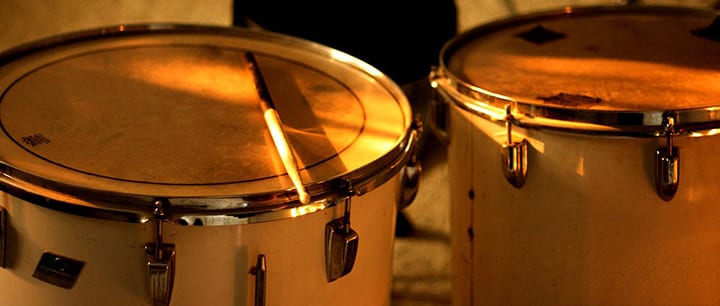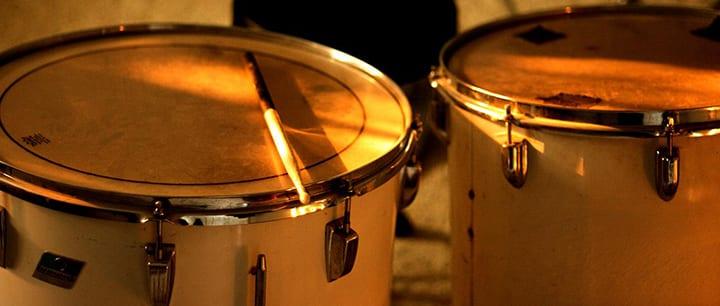 Learning how to read drum music can be challenging, but there are a few tricks that will help you coordinate all the information contained in drum set notation.
Learning how to read drum music can be challenging, but there are a few tricks that will help you coordinate all the information contained in drum set notation.
While it is possible to be a good drummer without knowing how to read music, the ability to read will open up worlds of opportunities to the musician! You can learn from any book, compose your own pieces or exercises, and transcribe the works of your favorite artists.
Reading drum music is power! Are you ready to get started? Here are six tips for learning how to read drum sheet music.
How to Read Drum Music: 6 Tips
Fist, let’s take a look at the rhythm staff:
This is the standard notation. Occasionally, you may see a staff with the snare on the center line, but that is fairly rare. Most likely, you will begin by reading drum music that contains only the snare, kick (bass), and hi-hats.
Now, let’s begin the process of decoding it all. In the grooves below, the time signature is 4/4 (four beats, quarter note gets the beat). They are counted as 1 2 3 4.
The hi-hats are written as 8th notes (eight to a measure) and that is a subdivision. They are counted as 1 & 2 & 3 & 4 &. (Each line below “says” the same thing, but it is a good comparison for common variations in notation).
Each groove is two measures, separated by a “bar line.” Line A contains rests, quarter, and 8th, respectively, and they indicate silence for that duration.
Anchors
Look for the parts on the staff that line up directly. Hi-hats and bass? Snare and hats? These will help ground your interpretation of the music.
The limbs required for those voices will hit together. In the first measure of each groove, the bass plays beats 1 and 3, and the snare plays beats 2 and 4. They line up with the hats.
Changes
Another important part of learning how to read drum sheet music is observing the voices that change in the groove.
Which voices do not change? Here, the hi-hats never change, so you do not have to busy your eyes (and brain) with continuous reading of those figures.
Notice that the snare is always on 2 and 4 as well. You will quickly be able to move those to auto-pilot and concentrate on reading the bass part, because it is the only voice that changes. Nice shortcut, huh?
SEE ALSO: How to Play Drums for Beginners
Isolation
If you run into a tricky pattern within a measure, isolate that part and work it out before putting it back into the whole.
For example, the first few beats of measure 2 may be challenging at first. Those are your target beats.
Counting
Be sure to count as you’re learning how to read drum music! There is nothing better for correct note placement.
In these grooves, the 8th note is the smallest subdivision that the drums, which are the main voices, represent. Remember: 1 & 2 & 3 & 4 & – if you can say it, you can play it.
Coordination
If getting all your limbs to cooperate is a challenge, start off with the hi-hats, and add the snare or bass (whichever is easier). Get a solid feel with those first.
Then add the other parts until you are comfortable with the feel.
Now you know how to read drum music! This ability will always serve you well.
Remember to look for your anchors, notice which parts do or do not change, isolate trouble spots, count as you play, and add or subtract voices until you can play them all.
These tips should streamline the learning process and make it more enjoyable. Don’t forget to practice, practice, practice!
Post Author: Tracy D. teaches percussion in Edmond, OK, as well as online. She has been playing the drums in various bands for more than 13 years, and has also played intermittently with the OKC Community Orchestra. Learn more about Tracy here!
Photo by Cikd
Suzy S.

